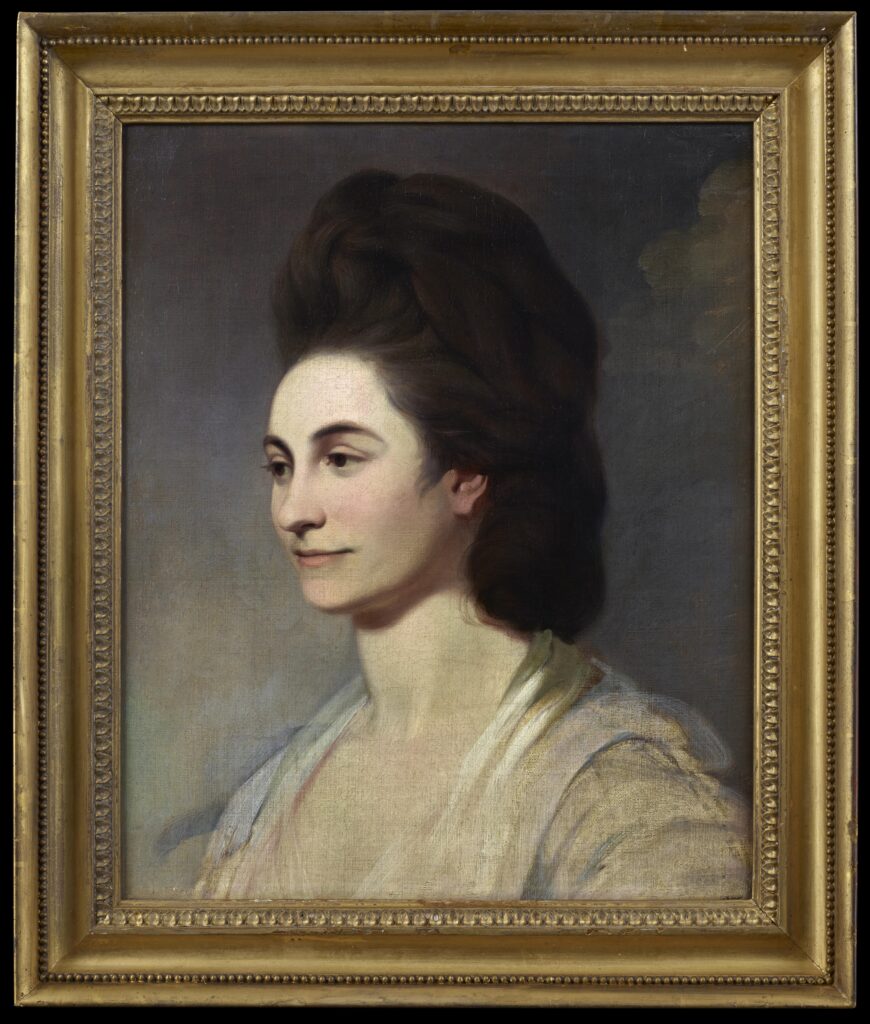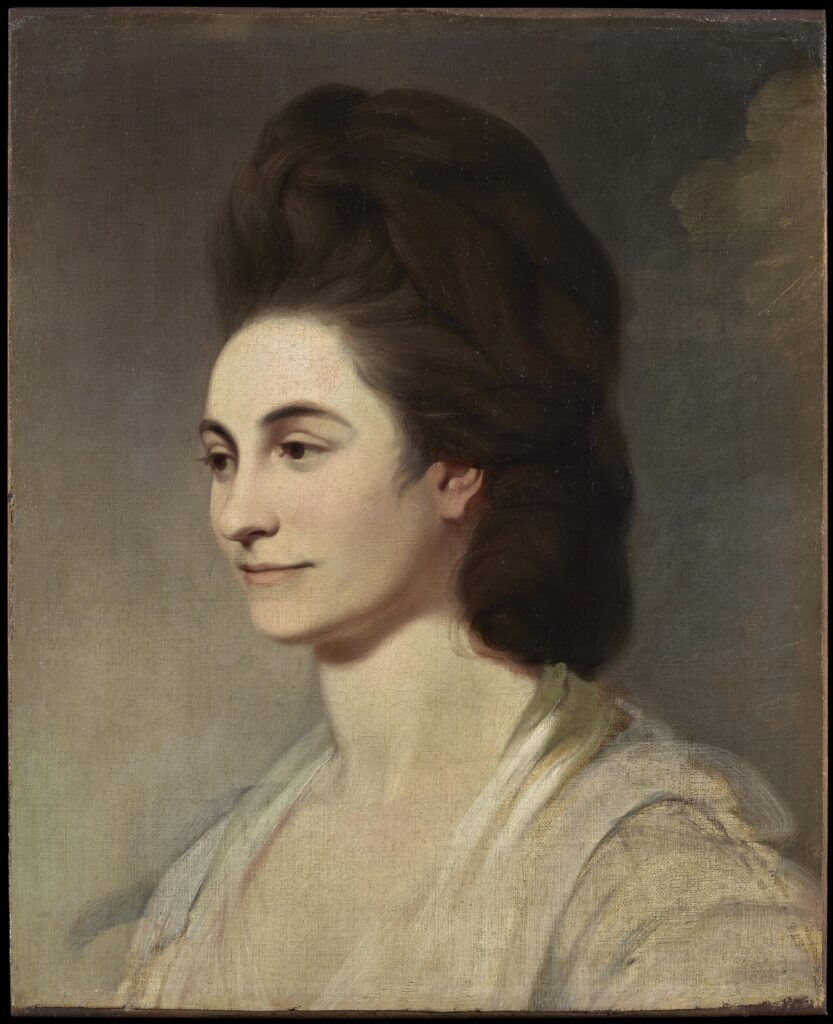John Hamilton Mortimer
1740 - 1779
A Portrait study of Lady Jane Piggott (1751-1841)


Medium:
Oil on Canvas
Category:
Dimensions:
48.4(h) x 38.4(w) cms
Framed Dimensions:
58(h) x 50(w) cms
Essay:
John Hamilton Mortimer was an English painter of historical and romantic literary themes, portraits and conversation pieces. He was born in Eastbourne in 1740. In 1757 he was briefly a pupil of Thomas Hudson at the same time as his friend, Joseph Wright of Derby, and in 1759 he studied with Thomas Edge Pine and was close friends with Thomas Jones, his fellow student at the St Martin's Lane Academy. He won several prizes from the Society of Artists, was elected ARA in 1778, and exhibited at the Royal Academy in 1778 and 1779.
Mortimer was very active in the progressive group of the Society of Artists and was elected President in 1774. His conversation pieces were influenced by Zoffany, though from 1770 his style became more romantic and influenced by Salvator Rosa with groups of banditti in wild Italianate scenery. His major works were executed in the 1770's, such as ceiling decorations for Brocket Hall which were completed in 1773, and grand historical pictures for Radburne Hall. His best portraits and conversation pieces were executed towards the end of his life which was cut suddenly short by an unknown illness.
-
This portrait was likely painted c.1775 in the last decade of Mortimer's life during the height of his powers as an artist and at around the time that he was elected President of the Society of Artists.
Lady Jane Piggott (nee Dunnington) was born in Manchester in 1751 and married Sir Arthur Leary Piggott in 1773. Sir Arthur (1749 - 1819) was a highly respected lawyer and politician born in the West Indies. A staunch Whig, he was Knighted and appointed Attorney General in 1806 and was MP for Arundel, Sussex.
Another portrait by Mortimer which is presumed to be of Lady Piggott is in The Louvre (RF 2439). This work, perhaps the finished version with the present painting being the preliminary sketch, shows Lady Piggott in a feigned oval holding a print portrait of Richard II from Mortimer's own series of etchings 'Twelve Characters from Shakespeare' published 20 May 1775. The Louvre has therefore dated their picture to 1775 and we may suggest the same date, or slightly earlier, for the present picture.
The inclusion of Mortimer's own print in the Louvre picture hints at a close friendship between him and the Piggotts. Indeed, Jane Piggott is recorded as witnessing Mortimer's will alongside other close friends Mary Ireland and Allen Hurrell, Mortimer's brother-in-law. John Sunderland writes that Jane Piggott presented her portrait (meaning the present picture) to Catherine Ann Lanyon, Mortimer's niece, 'with whom she was very friendly' (see J. Sunderland in lit., p. 98).
A note on the provenance:
Sir Charles Lanyon, Mortimer's great-nephew, was an MP, engineer and architect. He is considered Belfast's most important architect of the Victorian era alongside William Barre. Among his best known projects are the Antrim Coast Road (1832-42), the main building of Queen's University (1849), and Belfast Custom House (1857). The painting remained in the possession of Mortimer's descendants until well into the 20th century.
Provenance:
Given to Catherine Ann Lanyon, née Mortimer (1773 - 1840) the artist's niece, by Lady Jane Piggott;
By descent to her son the architect Sir Charles Lanyon (1813 - 1889);
By descent to Dorothy Elizabeth Mary Millar, née Westropp (her inscription verso) (1904 - ?)
Private collection, UK.
Literature:
'The Life of Mortimer the Painter', in The Monthly Magazine, or, British Register, Issue I, 6 Feb 1796, p. 24.
J. Sunderland, 'John Hamilton Mortimer and His Life and Works', in The Walpole Society, Vol. 52, 1986, p. 192, cat. no. 144, ill., fig. 265.